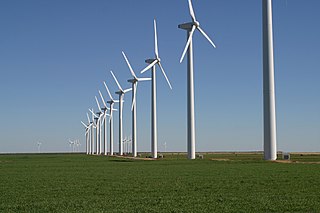
Sugarloaf is a ski area and resort located on Sugarloaf Mountain in Carrabassett Valley, western Maine. It is the second largest ski resort east of the Mississippi in terms of skiable area and snowmaking percentage (95%); its continuous vertical drop of 2,820 feet (860 m) is the second longest in New England. Sugarloaf recorded a total of 352,000 skier visits in the 2005–2006 season, ranking it second among Maine resorts and 11th in New England.
The Western Lakes and Mountains region spans most of Maine's western border with New Hampshire. A small part of the scenic White Mountain National Forest is located in this area. The region consists of Oxford County, Androscoggin County, Franklin County, as well as northern York and interior Cumberland counties. The largest cities in the region are Lewiston and Auburn. Notable towns include Bethel, Bridgton, Oxford, Rangeley, and Rumford. Many of the state's highest peaks are located in the region, although the highest, Mount Katahdin, is not.
The Cape Wind Project was a proposed offshore wind energy project on Horseshoe Shoal in Nantucket Sound off Cape Cod, Massachusetts. It was projected to generate 1,500 gigawatt hours of electricity a year at a first-dollar cost of $2.6 billion.

The Carrabassett River, a tributary of the Kennebec River, is located in Franklin County and Somerset County, Maine, in the United States. It rises near Sugarloaf Mountain, east of Rangeley Lake, and runs for 33.8 miles (54.4 km), flowing southeast past Kingfield and joining the Kennebec River in the town of Anson.

Sugarloaf Mountain is a ski mountain located in Carrabassett Valley, Franklin County, Maine. It is the third highest peak in the state, after Mount Katahdin's Baxter and Hamlin peaks. Sugarloaf is flanked to the south by Spaulding Mountain.

Mount Redington is a mountain located in Franklin County, Maine. Redington is flanked to the northeast by South Crocker Mountain and to the west by Black Nubble. Redington stands just northeast of the U.S. Navy Survival Escape and Evasion Training Facility (USSEAETF).

South Crocker Mountain is a mountain located in Franklin County, Maine. South Crocker Mountain is flanked to the north by Crocker Mountain, and to the southwest by Mount Redington.

Wind power is a branch of the energy industry that has expanded quickly in the United States over the last several years. In 2023, 421.1 terawatt-hours were generated by wind power, or 10.07% of electricity in the United States. The average wind turbine generates enough electricity in 46 minutes to power the average American home for one month. In 2019, wind power surpassed hydroelectric power as the largest renewable energy source in the U.S. The federal government and many state governments have policies that guide and support the development of the industry, including tax credits and renewable portfolio standards.
Maine Huts & Trails is a United States non-profit public service organization that maintains 80 miles of trails in Maine.
Black Nubble is a mountain located in Franklin County, Maine. Black Nubble is flanked to the southeast by Mount Redington. The U.S. Navy Survival Escape and Evasion Training Facility (USSEAETF) is located just south of Redington.

The Hepburn Wind Project is a wind farm built and owned by Hepburn Wind, a community co-operative, and supported by the Victorian Government. The location of the project is Leonards Hill, 10 kilometres (6.2 mi) south of Daylesford, Victoria, north-west of Melbourne, Victoria. It comprises two individual 2.05 MW wind turbines supplied by REpower System AG which are projected to produce enough energy for 2,300 households when the wind is blowing, almost as many houses are in the twin-towns of Daylesford and Hepburn Springs.
Stetson Mountain is a small mountain located in Washington County, Maine; a 8-mile (13 km) long ridge running roughly north–south. The summit elevation is between 1,080 ft (330 m) and 1,090 ft (330 m). Stetson is approximately 10 miles (16 km) from the Canada–United States border with New Brunswick.

Kibby Wind Power Project is a wind farm on Kibby Mountain in Franklin County, Maine, United States of America.
There are a number of wind power projects in the state of Maine, totaling more than 900 megawatts (MW) in capacity. In 2020 they were responsible for 24% of in-state electricity production. In 2019, Maine had more wind capacity than the other five New England states combined, at 923 MW.
New York has 2,192 MW of installed wind power capacity as of 2022. Most of New York's wind power is located in upstate New York as onshore wind farms. New York has set a goal of developing 9,000 MW of offshore installed wind power capacity by 2035 that will power an estimated 6 million homes. As of October 2022, New York has five offshore wind farms in development with approximately 4,300 MW installed capacity.

Wind power in New Hampshire began in 1980, with the installation of the world's first wind farm at Crotched Mountain, consisting of 20 30 kW wind turbines, although it closed decades ago. As of 2020, five wind power projects are operating in the state of New Hampshire – Lempster Mountain, which opened in 2008, Granite Reliable Wind Farm, which opened in late 2011, Groton Wind, which opened in 2012, Jericho Mountain, which opened in 2015, and Antrim Wind, which opened in 2020.
The Broad Mountain Wind Energy Center was a proposed wind farm planned for construction on the slopes of Broad Mountain in West Mahanoy and Butler townships in Schuylkill County, Pennsylvania. The first phase of the project was blocked by legal action in the Courts of the Commonwealth of Pennsylvania, though initial funding was allocated, and would have included 8 Gamesa 2MW Wind Turbines that were planned to have been operational in late 2011. Phase two of the project will include 27 additional 2MW wind turbines.

The U.S. state of Massachusetts has vast wind energy resources offshore, as well as significant resources onshore. The 2016 update to the states's Clean Energy and Climate Plan had a goal of reducing 1990 baseline greenhouse gas emissions levels by 25% by 2020. Current goals include installing 3,500 megawatts (MW) of offshore wind power in the state by 2035. However, as of Q4 2021 the state had only 120 MW of wind powered electricity generating capacity, responsible for generating 0.9% of in-state electricity production. The state has awarded contracts to two offshore projects, the 800 MW Vineyard Wind project and 804 MW Mayflower Wind project. Construction began on the Vineyard Wind 1 project on November 18, 2021, after a long fight for approval. Commonwealth Wind was selected for development in 2021, but the developer has attempted to cancel the project due to increased costs. There are eight projects planned for off the southern coast of Massachusetts, though some will deliver power to Rhode Island, Connecticut, and New York.

Block Island Wind Farm is the first commercial offshore wind farm in the United States, located 3.8 mi (6.1 km) from Block Island, Rhode Island in the Atlantic Ocean. The five-turbine, 30 MW project was developed by Deepwater Wind, now known as Ørsted US Offshore Wind.

Wind power in North Carolina is found along the coastal areas in the east and mountain regions in the western part of the state. The state has significant offshore wind resources. In 2015, small scale wind turbine projects were found throughout the state. In 2016, North Carolina's first large scale wind project, and the first in the southeastern U.S., was completed near Elizabeth City.













